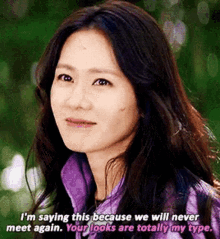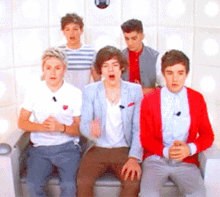Today's society makes it difficult for people to fit into what is deemed "beautiful." We obsess over the tiniest details of ourselves in hopes of one day reaching these societal standards. However, beauty is never set as one straight thing. In everybody's eyes, beauty means something different. Let's take a little trip around the world to discover the many forms of beauty and hopefully redefine what we feel is "beautiful."

Image Credits: Tim Mossholder from Pexels
Let us slide into your dms 🥰
Get notified of top trending articles like this one every week! (we won't spam you)The Wild, Wild West
I'm sure we are all familiar with the infamous Western beauty standards. In Western countries, the beauty standards seem to vary quite a lot. In the past, thin frames, big eyes and lips, small noses, and long, blonde hair were considered the ideal for most women. However, in modern times, tanned skin, curvy frames, and dark hair have also become ideal.
The recent rise of social media and celebrity culture has seen a shift in Western beauty standards. While it is still very exclusive, there is more celebration of different cultures and representations of diversity. From movies to literature, there has been a significant shift in what was represented before as opposed to now.
While social media has its upsides, there are, of course, its downsides as well. The beauty standards being created are unrealistic and hard to attain, opening up a whole world of new insecurities that we never thought about before.

Image Credits: Anna Keibalo from Unsplash
Take the Quiz: What Type of Notes Should I Take?
Discover the best note-taking method for your learning style!
No Rest In Europe
The Eurocentric beauty standard, a concept that seems to have the rest of the world in its clutches, consists of long and straight blonde hair, a thin frame, small noses, fair skin, and light eyes. While definitely not an easy feat, historical colonization dating back many centuries led the rest of the world to adapt to this standard of beauty. While the impacts of this standard are not the best, other aspects of Europe provide a more unique take on beauty.
If there is anything Europe loves, it's a bold lip. It's a staple in what is considered "Parisian makeup" or "French Girl" makeup. In countries such as Spain, located in the southwestern corner, it is reported that many women prefer a natural makeup look, contrary to what we might see online. There is a stark contrast in England, with many women opting for a bolder makeup look with bigger lashes, striking contour, and enough highlighter to blind a man.
Europe is also highly regarded for its elegant and timeless clothing style. Its use of basics can be seen in casual streetwear, consisting of jeans, tee shirts, and runners, as opposed to sweats and athleisure. There is a strong preference for neutral tones and well-tailored clothing, such as trench coats, blazers, suits, and more.

Image Credits: Tuấn Kiệt Jr. from Pexels
A Struggle for Beauty in East Asia
The beauty scene in East Asia can be considered cut-throat, to say the least. With a beauty standard of fair skin, large eyes with double eyelids, slender and narrow noses, small and v-shaped faces, and a slender frame, these features make up the baseline for beauty in most East-Asian countries. With the competitive beauty standard, citizens invest in plastic surgery and intense beauty regimens to achieve these looks. I think it's safe to say the standard might be a little too high.
However, in my not-so-professional opinion, I believe the most interesting and beautiful attributes in East Asia aren't in the physical aspects but rather the cultural and style trends. I'm sure we've all been on social media aimlessly passing the time, and if you're like me, you've most definitely been on the makeup side of these platforms, where a recent trend of East Asian makeup styles has been steadily surfacing. I found myself captivated by them, all widely different from one another but holding the same fascinating essence.
Some of the most notable I found were Douyin makeup, a popular Chinese makeup style consisting of shining eyeshadow paired with "manhua" lashes, deep pink blushes, and blurred lips. Igari makeup consists of a natural, flushed look centered on applying blush. And finally, Gyaru's makeup is a dramatic and bold look that emphasizes the eyes.
Recent trends in East Asian skincare have made waves in the West and around the world. "Glass skin" is a big phenomenon in East Asia, describing skin so clear and dewy that it gives off the effect of a glass-like surface. This trend has recently taken over social media and sparked interest in many East Asian skincare products. The products are highly renowned for their natural ingredients and incredible success rate, making for a big market all around the world.

Image Credits: Nripen Kumar Roy from Pexels
Beauty Through Culture in South Asia
South Asia, renowned for its colorful and diverse culture, has seen beauty standards shift towards the Western view. The pressure for fair skin, big eyes, small noses, and a small frame stems from the deep-rooted historical belief that it makes people look more "rich."
However, South Asia is highly esteemed for other things as well, such as its admirable hair care. Having long and strong hair is celebrated and used to symbolize femininity and divinity. Before washing hair, hair oils are applied to make it stronger and healthier. Sometimes, Henna is used to color the hair because it is made with natural ingredients, preventing hair damage.
The essence of the cultural traditions hold beauty in of themselves. Women are adorned in gorgeous ethnic jewelry, such as bangles, long earrings known as Jhumkas, and various jewelry sets. Gold jewelry is popular for its association with wealth and beauty, radiating luxury and power. Mehndi, or Henna, is a dye used to create beautifully detailed patterns as body art, usually at weddings and celebrations.

Image Credits: Bestbe Models from Pexels
Celebrating Femininity In Africa!
African beauty standards are diverse and broad. They mainly center on a natural look, which spotlights natural features and a fuller figure. This is derived from the belief that beauty, as a whole, should be used to celebrate women and femininity.
Many African cultures create detailed body art using natural ingredients consisting of different colors and patterns. This body art is a form of symbolism of rank, culture, boldness, celebration, mourning, and protection. The colors represent different points in someone's life and central milestones, such as marriage, holidays, and other important dates.
African hairstyles celebrate beauty, becoming a central part of self-expression and holding societal and historical significance in many African cultures. They are diverse and expressive, incorporating creative ornaments and intricate designs, including cornrows and dreadlocks. These hairstyles can help depict someone's age, wealth, status, culture, and identity, making them a symbol of creativity and beauty.

Image Credits: George Milton from Pexels
In society today, it's hard to feel beautiful. We feel stuck in an endless loop where we stress about the tiny details of ourselves in hopes of looking beautiful in the eyes of others. However, if there is one thing I want you to take away from this article, it's that beauty is never one straight thing.
As cliche as it sounds, beauty comes in all shapes, colors, and sizes. If we allow someone else's opinion of us to dictate how we feel about ourselves, we lose sight of the aspects that make us who we are. Remember that everyone is beautiful in their own unique way, and never let a stupid standard make you feel any less.
















